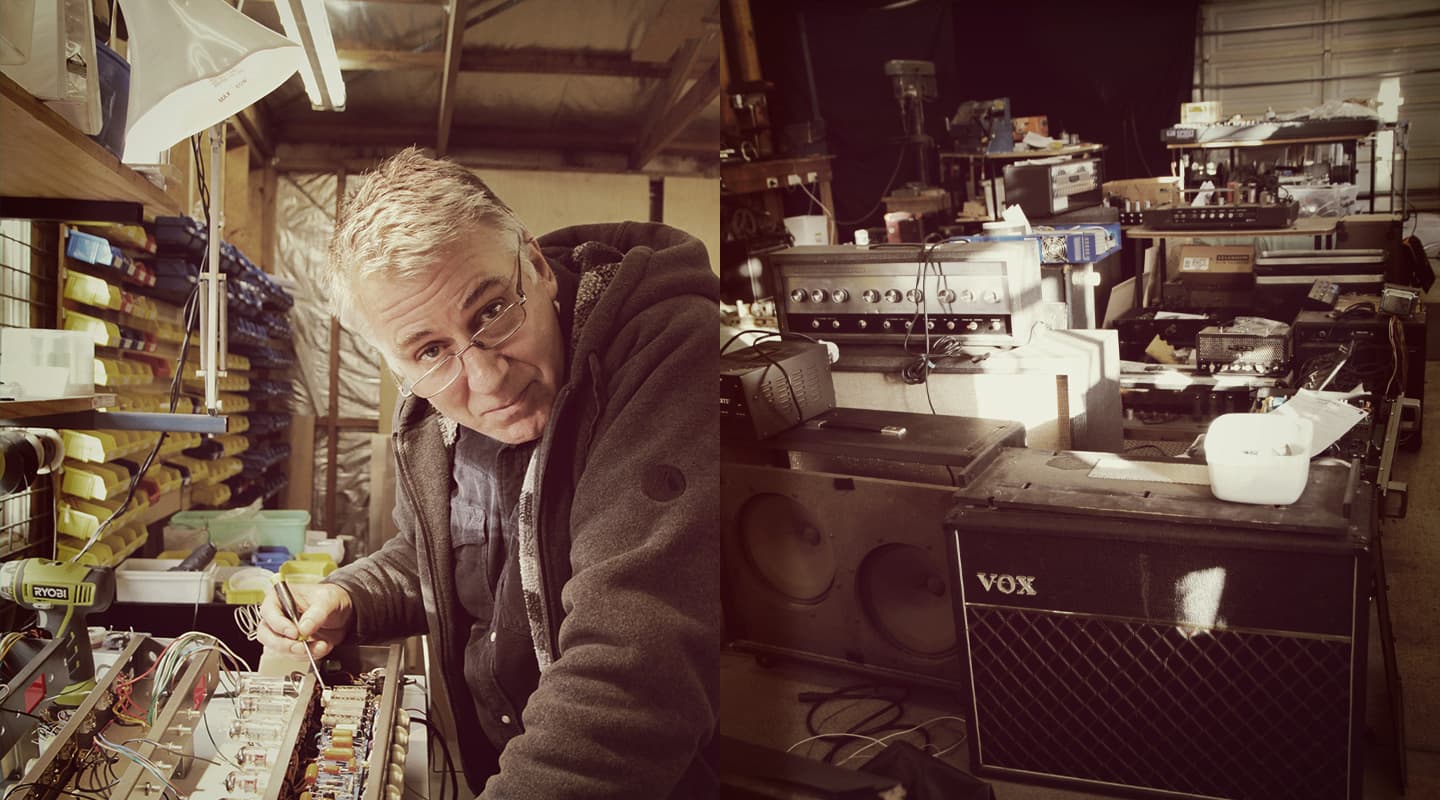
Dale Sherlock Unlocks Amps
One of Australia’s best boutique guitar tube amp builders opens up on an amp that does it all, what makes up an amplifier’s tone, a love of tubes, and his general bias for the right bias.
“Fender wanted to electrify instruments because musicians needed their instrument to be louder. Using the only technology available at the time, electron tubes, he put everything into making them sound great. Fender created not only great amplifiers, but an art form which still exists today. This is what occurs when you have someone passionate about something. They produce something great.”
That was Aussie tube amplifier designer and builder Dale Sherlock reflecting on the origins of tube amplifiers and Leo Fender’s contribution to the industry. Like Fender, Sherlock is passionate about the art of amplifier building. He’s not another copycat or cloner. His main interest lies in creating things that are truly unique. Armed with a knowledge base of over 30 years of tube amp experience coupled with the tight tolerances of an aviation engineering background, and decades of finding and fixing faults in just about every tube amp there is, he’s built the ultimate tube amplifier — the Fat Head. His other amp creations include the Buff Tone, Buddy, Angry Ant plus countless amplifiers customised for musicians throughout Australia.
The Fat Head in particular is an amplifier head with four different circuits in one box that takes you on a tone journey anywhere from bell-like cleans to super hi-gain and everywhere in between. He even has a patent for one of his inventions, the Tube Management System (T.M.S.) included in the Fat Head.
The great thing about boutique amplifier builders is that you’re going back to an age of passion. While larger more widely known amplifier manufacturers are increasingly cutting corners to maintain profit levels as their costs rise, builders like Sherlock will scour the globe for quality components and have transformers made to exact specifications. It’s all in the name of allowing the art form to develop great amplifiers, rather than being controlled by the dollar. Sherlock’s amplifiers are built to the standards of the era when tone was king. The flexibility of the Fat Head is outstanding, to a level that goes much deeper than twiddling a few tone controls. The Tube Management System (T.M.S) gives the lay-guitarist the ability to bias output tubes themselves. It even allows different tube types to be used in unison, the user to be able to set the bias from Class AB to somewhere closer to Class A, and even run Simul-class (two tubes in Class AB, and the other two in Class A). Truly giving the guitarist total control over their tone.
NOT AS EASY AS IT SEEMS
To create a unique circuit is not a simple matter. Some amp builders will use someone else’s design — because they know it will work and will give a particular result — without necessarily knowing why or how the circuit actually works. Sherlock, however, shows there’s still room for ingenuity. “There are the common tube amp circuits around” said Sherlock. “When you buy an IC (Integrated Circuit) or transistor for example there’s a recommended circuit and tech data on how to operate or set a circuit up for it supplied by the manufacturer. The RCA engineers for example, a tube manufacturer at the time of Leo Fender, gave the technical people that bought their tubes information on how to build circuits to operate them.
“What Fender and other builders did was use the basic circuits supplied by the engineers. He modified them to suit his requirements and wired them all together to create amplifiers. It was the same with Marshall and all other builders, even today. What all amp builders do is connect these common circuits in ways that are unique. This is achieved by changing component values like resistors and capacitors and by adding other circuits like tone stacks and other sound shaping filters. This is what primarily gives each amplifier its unique and distinctive tone.
“A tube amplifier is something that increases its volume or signal level from something small to large hence the name amplifier. People think the tube itself makes it sound like a certain amplifier, and to a certain extent it does, but it’s mostly the amps circuitry that makes it sound like a certain amplifier. If you put a Marshall tone stack in between two amplifying stages of an amplifier its overall sound would be more like a Marshall than if you put a Fender tone stack in between the same two stages of amplification. It’s the circuitry that shapes the sound of the amplifier — the tube just basically amplifies. However this is not completely true in that all tubes do have their own particular tonal characteristics and contribute to a lesser extent to the overall sound of the amplifier.”

THE 12AX7 FAMILY
The 12AX7s are the most common amplifying tubes (or valves as they are known in some countries) found in tube amps. The “12AX7 tube is the highest gain of the 12AX7 family, 12AT7 is lower in gain, the 12AY7 is lower again and the 12AU7 is the lowest,” said Sherlock. “These tubes basically sound similar but have different gain structures and are designed for different circuit applications. Putting a 12AT7 in an amplifier circuit won’t result in a Marshall sound. Likewise, putting in a 12AX7 wouldn’t result in a Fender sound. A single stage of amplification, for example a 12AX7 triode, will evenly amplify the full range of frequencies put through it. However if you add tone circuitry, it shapes that range of frequencies to give a certain contour. A Marshall contour is lots of mids and tops, where as a Fender is more of a scooped sound with the bass and the treble up, and the mids down.”
STACKS OF TONE
What Sherlock is referring to as one of the things that shapes the sound of a guitar amplifier is the tone stack. Basically a stack of tone controls comprising of treble, mid and bass controls, which is usually a capacitor and pot for each frequency range. There are five main tone stacks used with variations of these. The most familiar are the three-knob versions seen on Fender and Marshall Amps. Though they’re not identical, they both carry one problem. That is being of a passive nature, the controls are not fully independent of each other, of which the mid control is the worst, and actually quite ineffective. If you’ve ever wondered why you tend to get broadband boost whenever you whack up the mid control on your Twin or JTM, it’s because the mid control acts more like a volume control, affecting most frequencies. Though it’s also the only one of the three knobs that affects the mids too.
Then there’s the Baxandall, which you’ll typically find in hi-fi equipment, but also makes an appearance in the Ampeg B15 bass amp, among others. In use, the Baxandall has only two tone controls, one for bass, and another for treble. The result looks like two shelving filters usually centred around 1kHz. With this configuration, to get a mid boost or cut, you just have to either turn both the treble and bass controls up to get a mid cut, or vice versa for a mid boost. Obviously it also requires more gain to actually boost the mids. The Baxandall can also leave your signal flat with the controls in the centre position, while the Fender and Marshall tone stacks will typically exert some kind of shape over your sound whilst being in the flat position.
There are plenty of other variations as in when VOX added a top boost to their AC30 model; it was essentially half a Baxandall. While the normal input has a larger .047uF series pass capacitor in place, which lets pretty much everything above 150Hz through at full gain, the bright channel has a smaller 500pF bypass capacitor in place that acts as a high pass filter that can add 6dB gain above 1kHz. And there are also Butterworth filters that constitute a high or low pass filter, while leaving the pass band flat.
“All those different tone stacks will give you certain tones,” said Sherlock. “The tone stacks used in Fender/Marshall are generally passive in that they are not in feedback loops and operate like frequency dependent volume controls. The Baxandall tone stack however operates differently in that it’s usually (but not always) incorporated into the feedback loop of solid state hi-fi amplifiers and therefore gives greater control over the adjustment of the frequencies. The passive tone stacks are fine for most guitar amps because you generally don’t want massive amounts of bass boost for guitar anyway, which are more of a mids and top end instrument. So passive tone stack works well for guitars, and is why everyone uses them.
“The components are selected to give the tones that everyone is used to. In fact these passive tone stacks have helped define the sound of the electric guitar in contemporary rock.”
People think the tube itself makes it sound like a certain amplifier, but it doesn’t really work that way. It’s the circuitry that makes it sound like a certain amplifier
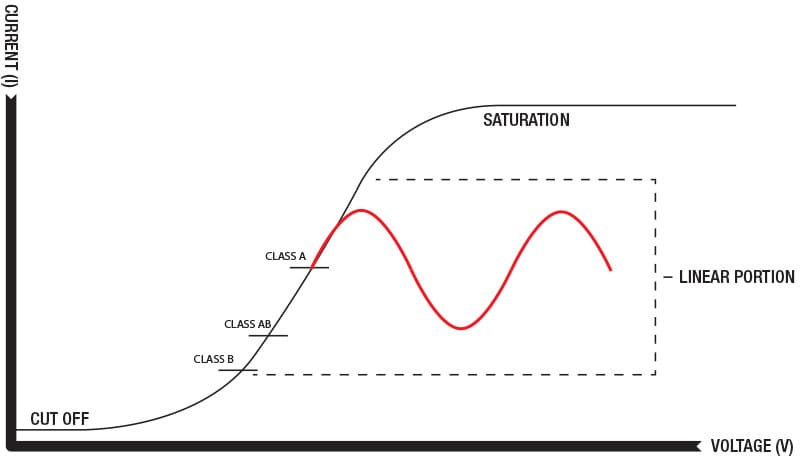
FOR THE LOVE OF IT
Sherlock loves tube amps. He makes a living from them, but “you have to do it for the love”, he says. To explain he grabs a small black plastic-covered device the size of a baby incisor in one hand, and with his other hand he fishes out a pre-amp tube roughly the size of an adult pinkie. “This is a transistor,” he says, holding up the 3-legged black chip. “It was supposed to supersede or render the tube obsolete, which it has been largely successful at doing but not completely in the case of high end audio. This transistor requires a fraction of the voltage to operate, it doesn’t require any heater current to heat it up, and the size is a fraction of the size of the valve. Now, with IC technologies we can fit thousands of those small transistors into one chip. So why would you want to use this old tube technology these days when this technology is available?”
The answer is simple. “Because tubes sound great.”
“Although some computer software applications and tube simulator amps come close at mimicking the sound of tubes, there is still nothing to this day that beats the mighty electron tube. That’s the only reason. That’s all it is. With transistors you don’t get the same dynamics, you don’t get that smooth creamy distortion when overdriven; you don’t get that quality, that feel, the fullness, you just don’t get the tone! With tubes you play a note on a guitar and you can not only hear that sound but feel it in your hands. Its thick and powerful, it’s like driving a high performance V8 muscle car. With a transistor it sounds nice and clean and good but you can’t feel it. It just doesn’t come back at you, it’s not alive.”

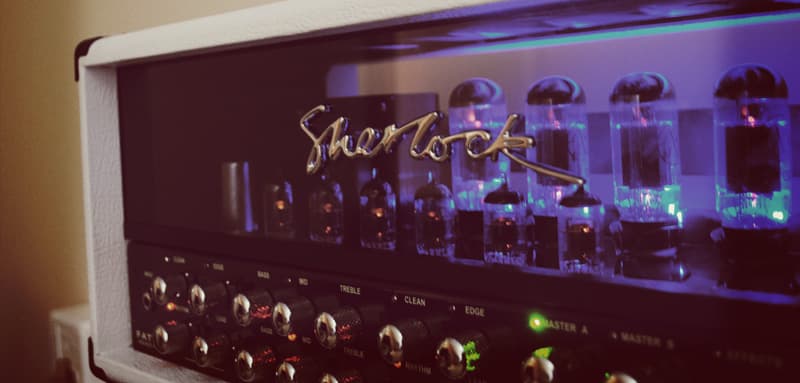
THE CHALLENGE WITH TUBES
“The other challenge with tubes is that they are old technology and they are only used in limited applications such as audio and high powered transmission,” said Sherlock. “There’s not a lot of money in it when compared to modern day electronics like computer technologies, that’s where all the money is. When tubes were the primary technology and were used in everyday applications, the manufacturing quality was higher than it is today.
“That’s why people search out new old stock (NOS) tubes, because they were built back in the day when that was the primary technology and they put a lot of care into making them and were always refining the designs to newer and improved versions.
“But the problem is that a lot of the best valves from that era are no longer available. What’s left is tubes that didn’t sell from that period although you may be fortunate to pick up some premium ones. It’s a bit hit ‘n’ miss with NOS tubes that have been sitting on a shelf for 30 years. They won’t deteriorate but they probably won’t be the premium ones that were made back then.
Mark Davie: How do you test valves for their quality?
Dale Sherlock: I put them in amplifiers and listen to them. It’s probably the best way to do it. I’ve got testers that test the valves different parameters and you can get very sophisticated, computerised testers but the best way to test them is to listen to them. Put them in a particular amp’s stage and listen to the gain, the amount of noise it’s got, and whether it’s microphonic or not.
MD: And is it pretty noticeable when you’re onto a good line?
DS: It’s best to get the right brands, the good brands. The higher the gain of the valve the more noise you’re going to get. So it’s best to get good quality valves and it’s just a matter of picking out the lower noise ones and low microphonic ones. You can’t pick microphonics up in a valve tester. You’ve got to be tapping the valve in an amp to hear it. All valves will be slightly microphonic but the level of microphonics can increase to the point where they’re not usable in certain stages.
MD: How often would you recommend to change tubes?
DS: For average use, about every 1-2 years for power valves and a few years for preamp valves, but if you play every day and loud, you should be looking at every 6 months or so for modern day power valves. Power valves do most of the work and tend to wear out quicker. If the amp doesn’t sound alive and punchy anymore you probably need a tube change. Another problem is due to the expansion and contraction of the tube’s elements when heating up and cooling down, the clearances start to get bigger and the elements can start to loosen and rattle. Some tubes even rattle from new. This is a real problem in combo amps due to the close proximity of the speaker. This is evident by strange rattling sounds coming through when playing certain notes.
MD: And who are making quality valves these days?
DS: Some brands are great — Tung-sol, Sovtek, Svetlana, Mullard, JJ Electronics which is the old Tesla and others. From buying and using tubes for many years I have realised that not all tubes are exactly the same. For example, if a company manufactures 1000 valves, not every one of those 1000 valves will be perfect. You might get 800 really good ones, 100 are not so good, and the other 100 are very average. The differences between them may be that some will be noisier than others or some will be microphonic, some will have lower gain than others and so on. As to what you end up with is down to luck of the draw unless they come tested and graded before you buy and even then some are still not usable. This is why tubes need to be carefully selected for their applications in various stages of an amplifier.
CUTTING CORNERS
It’s not only tube amplifiers that are victims of the modern age. With decades of repair work under his belt, Sherlock has seen a gradual decline in not only build quality, but also the quality of some of the other components used in amplifiers today.
DS: “Some of the big brand name companies will go to great lengths to keep their profit levels high and this then impacts on the quality of some of the components used. These amplifiers to the untrained ear will still sound okay but the actual art form of creating amplifiers has gone out the window. It’s more about profit these days than about tone. Then there is the reliability factor, if you buy a cheap amp you pay for it in the long run because it usually breaks down and someone’s got to fix it.”
MD: Have component prices gone up?
DS: Like most things, component prices have definitely gone up. You would think that because the manufacturing processes are getting better, prices would come down. Unfortunately the costs of operating everything in a business and transportation are all going up.
MD: What about the quality? We talked about tubes, but what about transformers, and other components?
DS: Same deal. They’re the most expensive parts of amplifiers so they’re the parts that are compromised the most. That’s why a lot of amplifiers power transformers run really hot, because they’ve compromised the size of them. They’ve got less metal in them because that’s the expensive part, so they run hotter. There’s an amp I’m repairing that uses three rectifier valves. The three rectifier valves altogether require nine amps just for their filaments. The transformer in the head can only supply two amps! So that part of it does not work properly. What is that?
When I do conversions for people on amps they have brought in from overseas, I pick up on all the things that these bigger companies have compromised on.
MD: Do you feel that it will get to a point where there’s no more room for compromise and it will stop?
DS: Oh no, they could still cut more corners!
MD: That’s comforting!
DS: The better companies are not as bad but the cheaper companies, they’re really bad.
MD: So where do you source quality parts?
DS: I source quality parts from all over the world. I get my high quality transformers made here in Australia with all the current and voltage ratings as required. What you get from Sherlock Amplifiers is a product whose cost comprises of its parts and labour to build. It doesn’t have shipping, wholesale, retail cost, etc. added which dramatically inflates the price. I don’t have all these other costs built-in because I sell direct from my factory and spend up big on quality components.
Further information is available on the Sherlock Amplifier website at www.sherlockamps.com
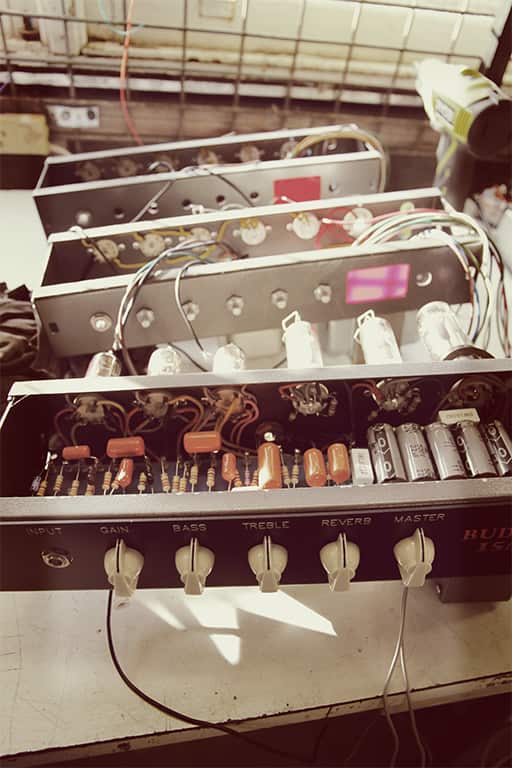





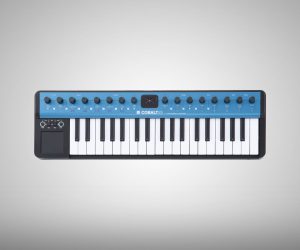



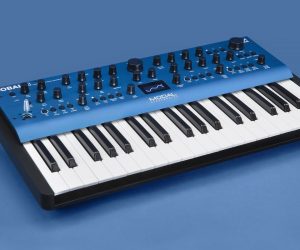






RESPONSES